MARTIALFORCE.COM
PRESENTS
Elba “Cookie” Melendez Hanshi
An Iconic Pioneer
DEC / 2013
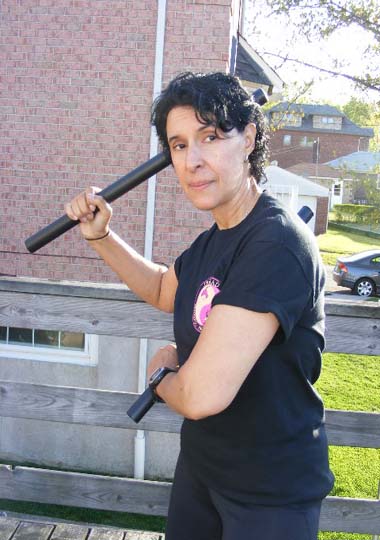
The immediate aim in self-defense is to survive from the
threat in that moment instantly
Interview by William Rivera Kyoshi
Edited by Lydia Alicea
In today’s culture, we have become accustomed to defining or describing the greatness of someone or something as, “iconic,” from baking flour to bridges, to Lil Wayne to quintessential Mozart. I do not see the harm in giving value or attributing “greatness,” to someone, but is it not a subjective opinion? What can be concerning is when the “iconic” definition is thrown around quite loosely; the result of which can be “watered down” value. To some extent, are not we all “iconic?” It is a definition that should be reserved with caution.
In the world of martial arts, or “mixed martial arts” as we know it today, we find this also to be true. How many times have you heard a Grand Master, or a competitor described as, “iconic,” to the point of nauseas? I hope you get my point.
Simply said: one can define value, or greatness by the individual’s actions relative to the circumstances in which they evolved; iconic, a representation, a symbol, a model. In the martial arts, it is “Do” or the path taken, one which will guide others through their journeys. It is a basic tenant of karate and other arts.
Often, it is a path faced with obstacles, challenges and the unknown of where one is headed. What is critical to students is learning how one can move through their path, despite the difficulties. For many who train in the martial arts, it is the fork in the road, and a turning point. It is critical for the guidance needed to come from someone who has been down the same path. This is particularly true for women training in the arts, for many, a somewhat more difficult path.
Back to greatness: is it relative or subjective? Are you labeled iconic today because what you were able to accomplish largely due to fortunate “advantages”: perhaps your instructor who is your mother, a world-class instructor who pushed and prodded you along, molded you in her image? Or because throughout social media outlets and in the competition arena, you are touted as “a trail blazer” in a world that barely recognizes female competitors? Or because your sexual alluding image is blasted on endless hype?
I beg to differ with this interpretation of greatness and prefer to give credit where credit is due: to the women competitors who are the true “pioneers” in the martial arts, or mixed martial arts: those who got to where they arrived at a time (back in the day ) where others did not exist before. Some were women who had to hide their true identity, a female competing against a male, but not as a female, and won.
Women, who trained with male instructors, fought male competitors and won because they were as good, or better than males. Or, women, out of fear of judgment, that needed to hide their training from their families and their peers. Combine some of these experiences, which become attributes, and you get to closer to a level of “greatness.”
One such pioneer is Elba “Cookie” Melendez Hanshi. Cookie, as she is best known, made her mark in the martial arts and as a competitor at a time when very few females were “doing it.” Cookie has a long and impressive resume as a competitor in her own right. Simply stated, in the martial arts circles, there are very few who do not know of Cookie, and many more who should. Amongst our female competitors, highly skilled, dedicated and making their own mark; their success can only be enhanced by learning about Cookie Melendez.
Cookie, an urban martial artist, born and raised in New York City, was home grown during a turbulent and violent period, the 1970s through early 1980s. Her training ground included the hard streets of the city, and the doors of dojos she knocked on, drawn by her desire to want to learn more; some of which were not open to training women. Cookie never allowed herself to say, “Oh well, guess I can’t learn this, or maybe I should not fight this guy.” No was never in her vocabulary.
Till today, Cookie continues to make her mark by teaching, training, and always, always developing innovative methods to open the scope of the martial arts to include many who ordinarily would not be drawn to training: children from poor- working class families, as well as mothers. Many of these women, because of cultural backgrounds, are presented with obstacles to the idea of training, to a sense of strength and protection, to feel a sense of control and power in themselves.
In retrospect, the experiences and successes attained by Cookie, stands to benefit others, the young, old, female, male, the bullied kids and the bullies as well.
As previously stated, many in the martial arts circles know Cookie, or trained with Cookie, and overwhelmingly, all have an affirmative respect and admiration for Cookie. She is simple on principles, uncomplicated with a personality that lights up a room when she enters. Cookie is tried and true, iconic in her own right.
Lydia Alicea
Writer for Martialforce.com.
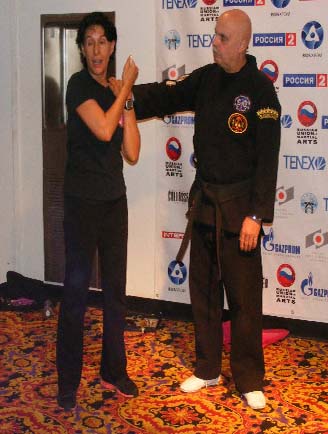
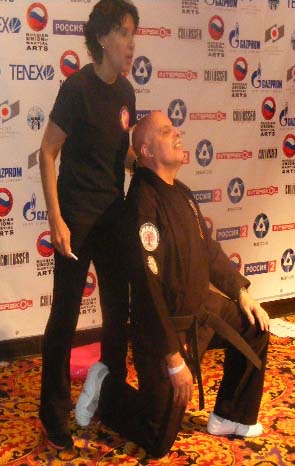
Martialforce.com: Where were you born and raised?
Cookie Melendez: “I was born and raised in Manhattan, City of New York. My parents are from Puerto Rico.”
Martialforce.com:: When and why did you first get involved in the martial arts?
Cookie Melendez: “It was back in 1968, when I was about fourteen years old. It began in a youth program held in neighborhood storefront. One day, I decided to go in to see what this was about. A Black Belt in meditation, had a candle lit before him, his eyes shut; he was throwing slow punches over the flame; suddenly with supersonic speed, he was able to turn off that flame. I said to myself, ‘Wow! I want to be able to do that!’”
On another day, I saw the same Black Belt outside the storefront, stopping some of the neighborhood youth walking past trying to recruit them to join a Karate class. I wanted to become one these students because I was driven by interest in finding out what was next, and hungry for what he had to offer. The name of my first instructor was Ray Myers.
I started Karate because of that flicker, the flame that could be turned off by Ray Meyers’ movements demonstrating skill and ability I had never witnessed before. It absolutely amazed me.”
Martialforce.com: How did your parents react when you said you wanted to study Karate?
Cookie Melendez: “My mom was fine because the Karate class was part of a youth program and I was involved in other activities like chess. It was safe place.
I studied under Mr. Myers for about one year. He later moved to Canada (he is a musician; I believed he played the saxophone.) Through an acquaintance I met a young man in the neighborhood, a Mu Duk Kwan fighter, brown belt. We called him Gingi.
Gingi picked up where Ray Myers left off, and continued to teach the kids in the neighborhood. I trained on my own for a while and than I was introduced to Gerald Gaylord Sensei, of the Ketsugen Karate System, who taught out of a church near where I lived. I received my Shodan in Ketsugen. When I began, I was already a yellow belt in Japanese Goju-Ryu under Ray Meyers. Unfortunately I later moved away from the neighborhood, Spanish Harlem.”
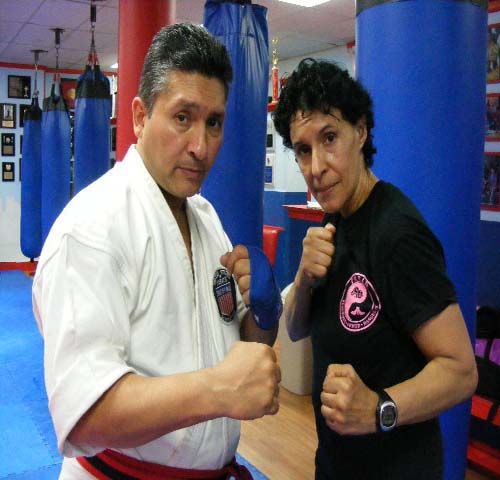
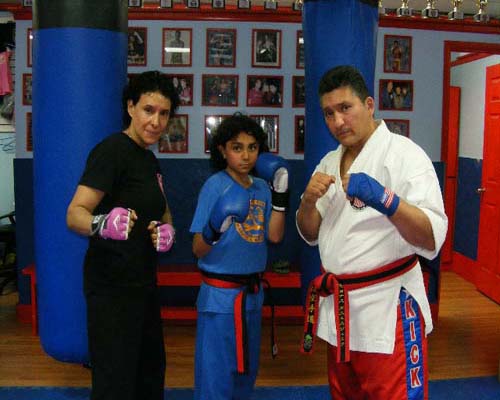
Martialforce.com: What high school did you attend? Were you involved in sports?
Cookie Melendez: “Central Commercial High School on the East Side, graduated in 1973. Yes, I was always athletic, played volleyball, received trophies including Most Valuable Player, and, before that, played softball as shortstop. I was a member of the New York City Fresh Air Fund Program, and was noted as one of the success stories.
After graduating from high school, I attended Baruch College where I later joined the Karate Club. I was already a Black belt under Ketsugen, and students in the Karate Club received college credit (she laughs).
One of the professors was a Korean stylist, a brown belt, ran the program. When he saw that I was a black belt, he had me help him out by teaching the classes.”
Martialforce.com: Did you compete?
Cookie Melendez: “My first tournament was in 1972 when I was a yellow or green belt. At this time, tournaments would separate female and male competitors, and would never classify according to rank. I remember fighting Joyce Santa Maria, a Black Belt.
Although I found her to be intimidating, something inside of me overcame this, a sense of toughness; for me, it was all about learning from the experience. It was great fighting at different tournaments. The black belts would take first and second and I would be taking third. It was a big accomplishment to place.”
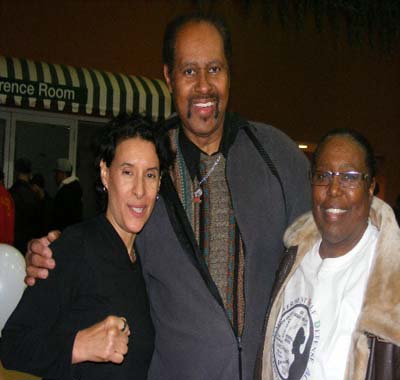
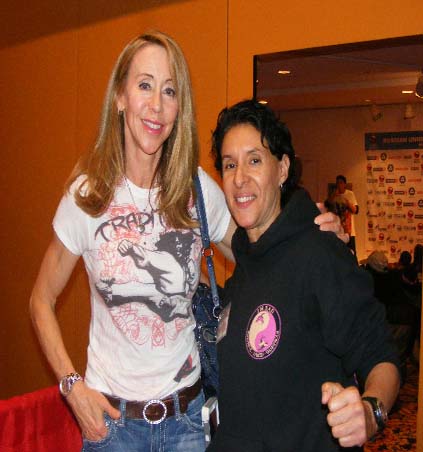

Martialforce.com: You studied Shotokan?
Cookie Melendez: “Yes. I was seventeen years old and hungry to continue in the Martial Arts but did not know where to go. I heard about a school run by Jerome Mackey on the east side of Manhattan. I begged my mother to sign me up. I was working part time after school and had saved up enough money for classes. Since I was a minor, I needed my mother’s signature. I met Toyotoro Miyazaki Sensei, who amazed me, his size, his quickness, his viscous side kick; I witnessed all of the stuff he was famous for.”
Martialforce.com: Describe the Karate training you experienced.
Cookie Melendez: “Very traditional, and no equipment or safety gear, I do not even remember using a mouth piece (she laughs.)”
I was already a black belt in Ketsugen when I attended Fred Hamilton’s school. I trained in Shotokan under Miyazaki Sensei. I truly enjoyed training in Shotokan so much so that I bought all the Shotokan books I could find to teach myself what I could, and then polished my techniques at Fred Hamilton’s school.
I stayed with the Shotokan kata as the curriculum added Bo Staff kata at an early rank and trained in Ju Jitsu.
Back in the 1980’s, I created a program, and opened my own school called ‘USA: United Shotokan of America.’ My dojo was located on 12th Street between 1st and 2nd Avenues, not too far from where I live now.
I used all the Shotokan katas I had learned and implemented other elements such as a basic Judo. I had trained under Rusty Kanokogi Sensei, my first Judo instructor at Jerome Mackey’s school. Mackey had all the top trainers.”
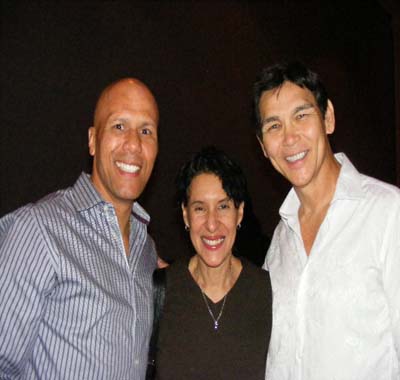
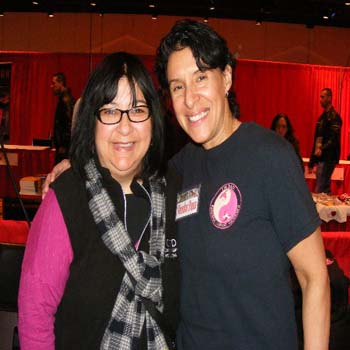

Martialforce.com: How did you get into Kickboxing?
Cookie Melendez: “I began Kickboxing in the late 1970’s. I trained with various kick boxing guys like David Claudio, and Paul Vizzio. I was drawn towards kickboxing because the point system in tournaments was not enough for me. When I began training, it was only with guys in the gym. I had good hands and I welcomed the challenge, the rush. Back then, I did not see women training in kickboxing.”
Martialforce.com: Do you remember your first match?
Cookie Melendez: “My first match was in Atlantic City, New Jersey at the Sands Hotel and Casino.
The PKA and the WKA were very popular back then sponsored by companies like Pepsi Cola and Coca Cola. I used to go to Atlantic City to watch the fights. One day, I asked Joe Corley of the PKA, ‘Listen why don’t you have any women out there competing?’
Joe Corley held his first kickboxing bout with female competitors at the Sands Hotel. In this match, Corley had me fight two people on the show one round each.
I have fought some great women competitors, top fighters in the country back then were Cheryl Wheeler, Graciela Casillas and Bonnie Canino to name a few.
I fought Casillas in 1980 or 1981 at the Westchester County Center it was WKA sanctioned, and I did not care if it was a title bout or not, I just wanted to compete.
I felt I was winning in the first 2 rounds. I fought with a deviated septum due to an uppercut I received just two weeks prior. My nose was not healing correctly. So, Cassillas clipped me and I started bleeding. She beat me on points.
After that bout, I went to Chicago to fight Cheryl Wheeler. After Chicago, I fought several bouts fights here and there.”
Martialforce.com: What are your workouts like?
Cookie Melendez: “For myself personally, I follow a regimen of moderation. I am a certified personal trainer.”
I felt that the martial arts was lacking umm! Knowledge, I think a lot of martial artists were stagnant, and I felt, again I am like a sponge. I always like to perfect my craft, and I feel driven, like what about this idea, see if anybody has done it. So if it has been done I would like to perfect it a little bit more, or bring it about, or mix things up, like cross training.
At some point, I chose to break away from the martial arts, for a while, quietly but not completely. I chose to enter into the fitness industry, by studying and obtaining my certifications. At the same time, I wanted to bring back and share what I have learned into my community, to help make the martial artist a better athlete.
Today, there are young martial artists who go to college to become conditioning coaches, doing exactly what I did, bringing stuff to their dojos. Example, from the Hoteikan System Sensei Tommy’s son, Anthony Carrano graduated from college and became a conditioning coach. Anthony created the MMA Jungle System which combines martial arts with fitness, like cross-training. It helps makes the martial artist a better athlete, and from there can go into other sports.
Also, I trained other grand masters, women and men. I had a client, a Korean woman, martial artist, also a golfer who was very hesitant to train with me, one of the problems she had was becoming tense while she was playing golf. One day, another black belt who came in to train, told her she should train with me. I asked her if she enjoyed playing and explained that I could help her perfect her game with the martial arts. In time, her body became stronger, and her game improved. She invited me to some of her events she said, ‘Cookie, I hit the ball now and it goes far!’ From her, this was quite a compliment.
From these experiences, I realized the importance of being able to reach women and teach them how they can improve themselves. You know, guys, they have each other and it is all good. I like to hang out with the guys as well preferring that they look at me not as another female, but as an equal, as another martial artist. I have learned from the guys just as much, as guys have learned from me. It is all about attaining and sharing knowledge.
From my fitness training, I brought back different ways of working out, mixing it up and making it fun so that it is relaxed rather than rigid.”
I have made other martial artists better by assisting them in training, including several Grand Masters.”
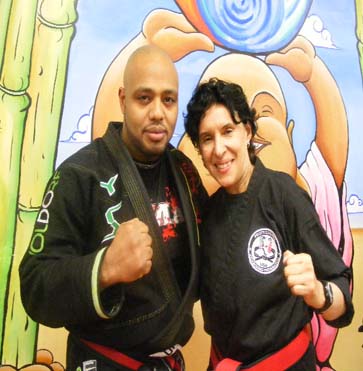
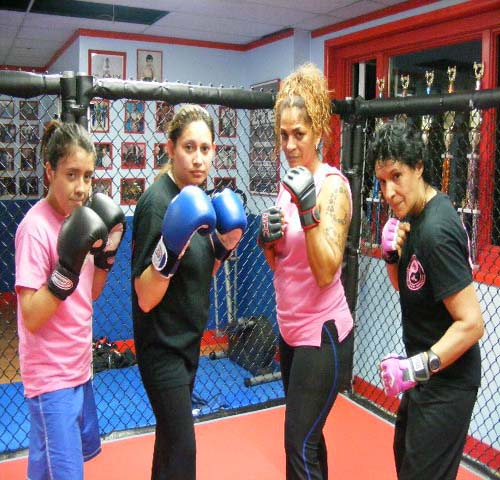
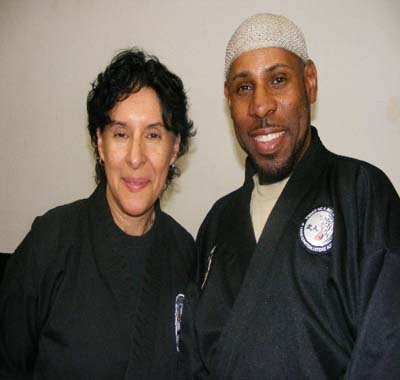
Martialforce.com: How different is it to teach self-defense than martial arts?
Cookie Melendez: “A person, if threatened, can respond by just picking up a pen and stab out of the mere fear of just getting hurt or killed. That’s not martial art. Self-defense is a survival instinct, and it is inside all of us
From a martial artist perspective, when I am dealing with another martial artist of my caliber, I speak within a language that is understood. I can sit down and I can explain a technique, break it down, and why used, its entire technicality. To a person who is not into the martial arts I will say you hit the groin or kick their shin, stick you key right in his neck, eye, etc., and it is over. I do not need to get into details you want to bust open a vein or artery, although I do explain the moves if I feel they can understand it, and not get squeamish. The immediate aim in self-defense is to survive from the threat in that moment instantly. It is very direct instruction, no need to get philosophical about it.
So yes, instruction is given as two different languages, martial art versus layman. You can understand both, but from a layman’s perspective, it is often necessary to deflect a great deal of the terminology.”
Martialforce.com: Talk to us about B.A.D. (Beautiful, Armed, and Dangerous) what preceded it in your development.
Cookie Melendez: “The idea behind B.A.D. came about, from something said to me many years ago by Grand Master Peter Urban. He told me I was an eclectic martial artist; when it was said, I did not know what the word meant; I was much younger back then.
When I used to go to tournaments, Grand-Master Ron Van Clief would often be competing. Upon arriving, I would immediately look to see where he would be competing. I was always in awe of him as I watched him, yet little did I know he was watching me fighting in a division.
Master Ron Van Clief had a Public Relation person named Maurice Miller. One day Maurice came up to me as I sat in the bleachers and told me, ‘Master Ron Van Clief would like to invite you to his dojo,’ Man, I was so excited, could not believe my ears!
As flattered as I was, I thought he was joking. So, off I went to his Chinatown dojo in my gi. As I sat across his desk in his office, he said, “I see you are ready to train” and I responded, ‘Yes Sir!’
Master Van Clief wanted to start up a kickboxing team and asked me to come on board since he felt I was a good fighter. I went to his dojo, training hard every day. It was not too long when I found myself becoming a Chinese Goju-Ryu stylist. He taught me kata, the Phoenix, and fighting. I do admit encountering some level of frustration to adapting from my way of fighting to Master Van Clief’s. As much I wanted to please him by becoming a fighter of his style, I struggled with it. I wanted to fight my way, and my legs wanted to move where I felt they needed to be; I was not one of those guys that wanted to go whap, pap, pap, pap like he did, especially if the guy was massive.
One day, Master Urban watched as I trained, he saw my frustration. He walked over to Master Ron Van Clief and said, ‘Why don’t you allow Ms. Melendez to fight her way? The reason she is a champion is because of what she has been doing and it’s been working for her so far. You are an eclectic martial artist!’ I liked that. Years later, Grand-Master Ron Van Clief promoted me to fifth degree.
I have always stayed true to my desire to take what others have taught me from their systems, but incorporate them on my terms through my own system.
People remind me of the people I have trained, what I have accomplished in the arts and how I have saved lives.
I am very passionate about what I do and proud about how one thing has led to another. I went through the tournament scene, traveled to parts of the world, been in movies. Back in the 1970’s, I traveled to Columbia and fought a guy in because the promoter could not find a female competitor of my caliber. Master Freddie Lopez was there. We were there with Master Rico Mercado, and the people were booing, it was their champion.
The event was televised. After a young boy came up to me and said, I have a magazine with your photo in it. Can you autograph it? I wondered what magazine this was. Sure enough it was me. Felix Vasquez had gotten me into this magazine, “The Female Ninja.” It was taken at my storefront dojo when I was in my early 20’s.
Going back to B.A.D., I wanted to start something, mix things up while putting some kind of fun in martial arts training. More importantly, I wanted to reach women who are not into the martial arts but were seeking fitness, empowering them through fitness and self defense.
When members join my class they get a free T-Shirt. B.A.D. reaches out to help women survivors of domestic violence, and abuse as well as those battling with chronic illnesses, and cancer; It is to help more of the female population of all ages. A woman came up to me one day asking for the t-shirt because her cousin, a cancer survivor is also is B.A.D.: beautiful, able to survive and beat Cancer, and because of that, she too is dangerous. It has many meanings to different women.”
Martialforce.com: Where does your self-confidence come from?
Cookie Melendez: “From my parents but primarily my mother. She was a strong female role model who I looked up to growing up, a very proud woman. My mother was confident and beautiful. I know I got my strength from her, watching how she handled the difficulties she endured, raising her children (five of us) on her own without my dad there, although he was never too far away. I know he always had my back.”
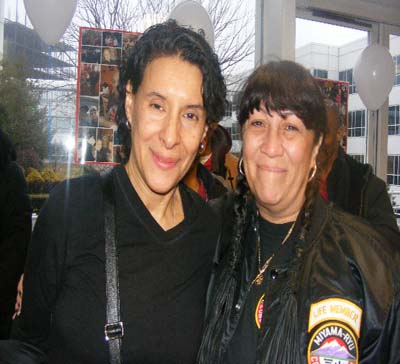
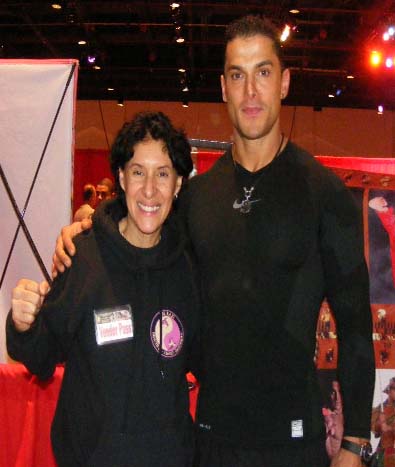
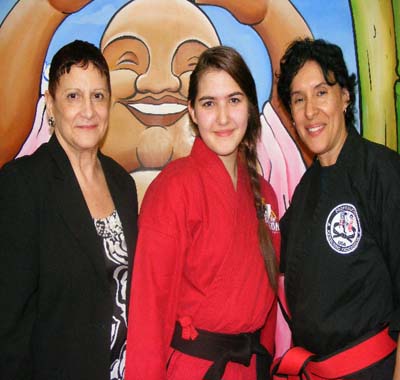
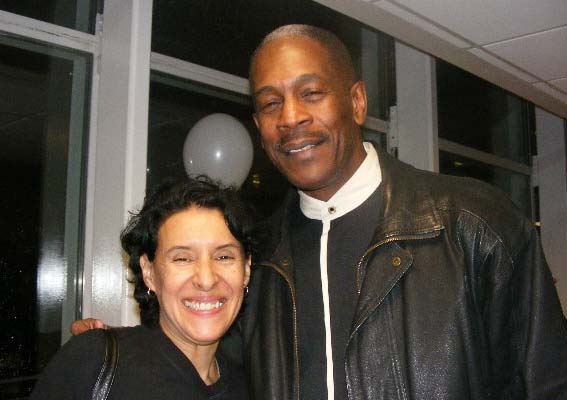
Martialforce.com: Talk to us about “Stick Kick-Boxing.”
Cookie Melendez: “I have always been brain storming with ideas, evolving so to speak. I have taken the martial arts to a point where to reach those who would not consider training, I throw in the element of making it fun. This is the case with stick kick-boxing. A student, can throw a kick, can learn how to punch and not have to think that they have to go for a reach black belt level or sign a contract. I tried to turn it into a fun thing where fitness and self-defense come together.
It is very non-traditional and comfortable, and although I gear the training for women, men benefit from it as well. A stick in the hand is like “Un palo de escoba.”
I present in my seminars, self-defense training where the focus is how to incorporate everyday objects. You do not have to be a martial artist to learn self-defense and when you can teach it by using objects that people are familiar with, it is sensible. 95 percent of the time I spend on this approach, and, the other 5 percent, I add something extra to it, in case you need it.”
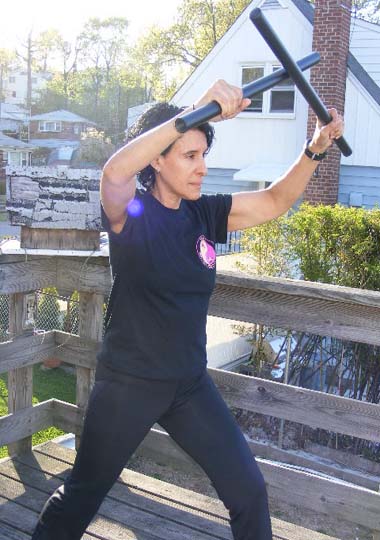
Martialforce.com: Are you surprised by the type of women that come to you to train?
Cookie Melendez: “Actually no. I am reaching those women who feel intimidated from living in an abusive environment, whether it is physical or verbal; or women who look in the mirror and do not like what they see; or young women lacking the self-confidence to achieve in school or work. These are the ones I want to reach, to help improve their quality of life. I find these goals challenging, and I welcome it. Do not tell me that cannot be done. Look at me.”
Martialforce.com: Do you find that some of the women you teach manage to turn their lives around, or improve themselves in their work, or school or as better parents?
Cookie Melendez: “Yes. Also, many of the mothers who come to drop off their kids for class will sit and stay, waiting more than an hour. These women do not seem to have enough time for themselves and are stressed. I say they need some form of outlet. When asked about training themselves, their responses are often negative like, ‘Since I was young, I was taught that ladies do not hit or ladies do not box or ladies are supposed to sit back and take in whatever comes our way; a woman’s role is to raise a family, cook clean, that’s it.’”
I see these women have a lot of things bottled up inside. Although many women today do not think this way, too many are controlled by cultural expectations.
Also remember, in the dojo, who is the instructor? A male, rarely a female. Since I have been at this particular dojo, we have more little girls. You have to start them early, as young as two years old which is why I started a separate program. I notice the little girls relating to the big girls including myself! To many of the girls, I am a big sister, a mother figure and the parents love it. The parents come to me with pride beaming, anxiously pointing out, ‘Look what she can do now!’
I tell my students I can be their grandmother and still have fun with them. When I have the students stretching, I tell them, ‘Grandma can do better, and who can beat Grandma?’ It is this approach of presenting instruction with a playful element that gets kids who would most likely turn away, instead feel comfortable stepping out of their shell. When parents see this positive effect on their kids they embrace it.”
Martialforce.com: Talk to me about your women’s fitness program.
Cookie Melendez: “Again, as always, thinking about something new or different to do, my mind came back to these parents. An idea came to mind. One day, I made an announcement at the dojo about a new program- a 21 day weight/loss weight program based on strong cardio workout. Truthfully, it is a fitness class for women who would most likely dismiss any type of training for themselves. I asked, “Who is in?” Mothers jumped to their feet, up went their hands.
The key to this is the 21 days, not a long time. Some women cannot get heads into long term goals, they do not see them. However, 21 days has an appeal because it is reasonable for many women who have never worked or had difficulty committing. Some of them come to me after two weeks telling me how others have noticed the difference in their appearance. The name of this program is Stick Kick Boxing Women’s Workout.
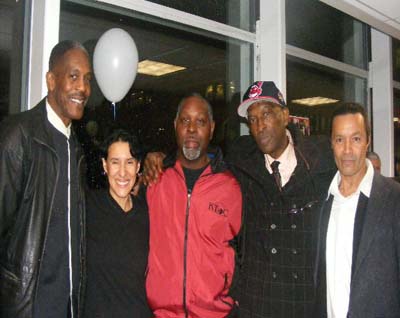
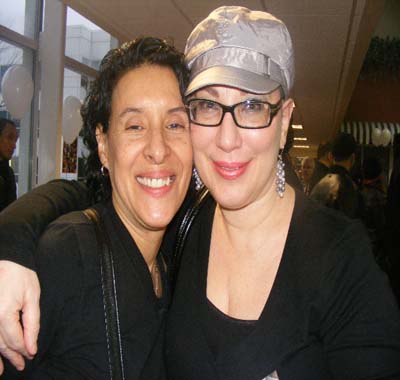
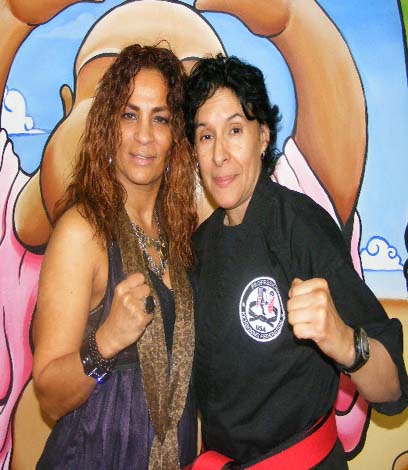
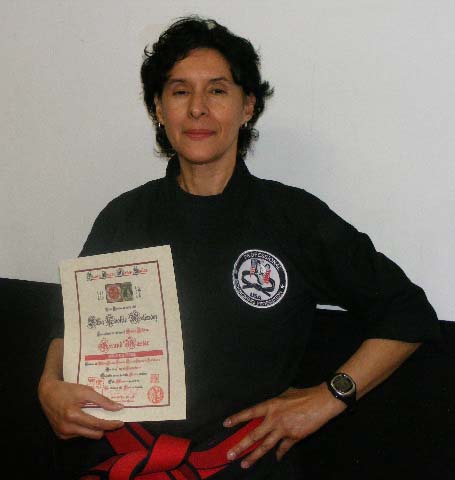
William Rivera: Cookie Melendez has been inducted into various Hall Of Fames, acted in movies, been featured in magazines, and played in various bands (percussion). Multi-faceted, Cookie teaches private classes, and also at America’s Finest MMA Academy in Elizabeth, New Jersey and Yonkers, New York. Contact her at melendez673@aol.com
Thank you to Jonas Nunez Shihan for allowing Martialforce.com to take pictures, as always you are a great host.
Thank You, Cookie for letting us into your life…And Yes
Elba Cookie Melendez Hanshi is B.A.D. (Beautiful, Armed and Dangerous)